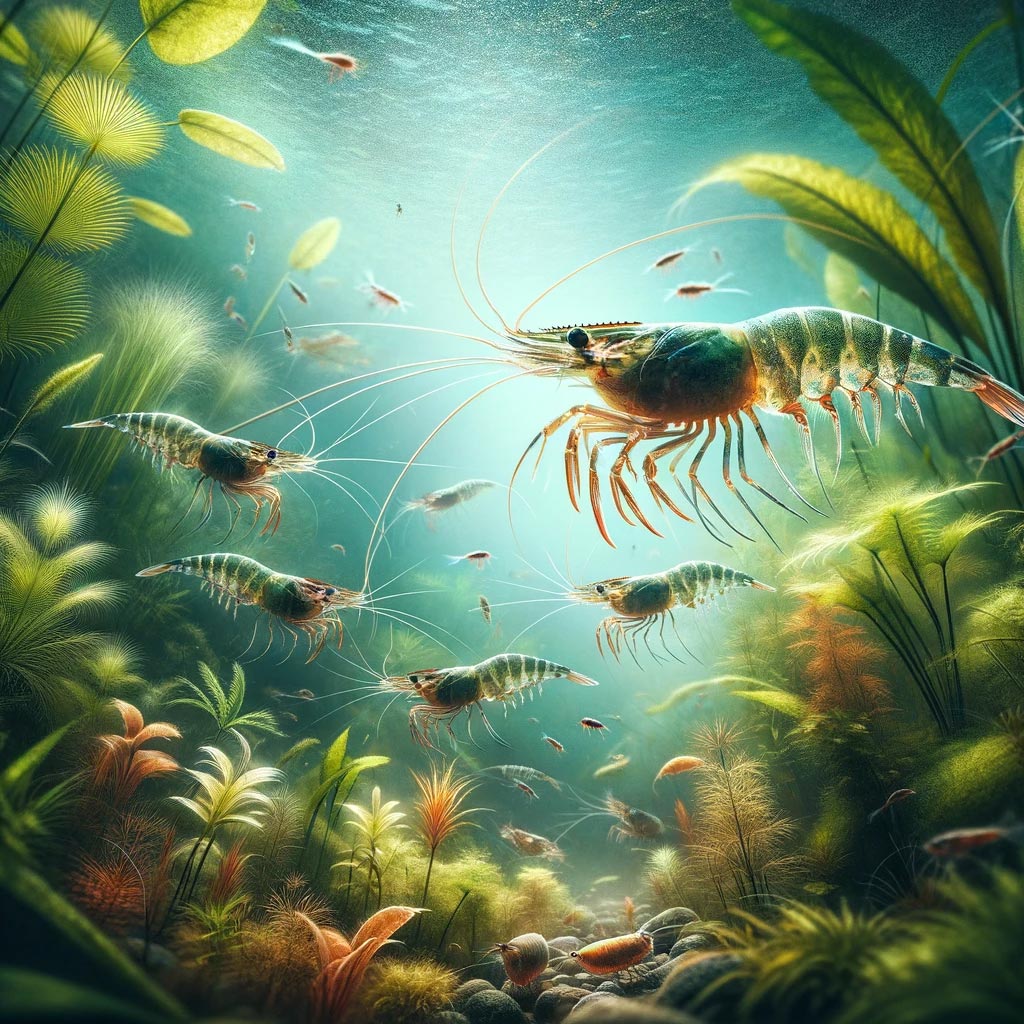Pacific white shrimp is a major aquaculture farmed species in the world and production is steadily growing. However, it has to deal constantly with major episodes of diseases. Acute Hepatopancreatic Necrosis Disease (AHPND or EMS for Early Mortality Syndrom) is one of them. Several scientific articles are reporting insects to be a good source of proteins for shrimp. Positive effects on the health of animals being regularly reported too (Gasco et al., 2018), it is noteworthy to investigate further the effects of insect ingredients on shrimps.

In last years, MUTATEC carried out about 50 applicative studies. Three of them specifically dedicated to shrimps, whose objectives were to evaluate the zootechnical performances of juvenile shrimp (Penaeus vannamei) by partially replacing fishmeal with black soldier fly ingredients.
Two of them were conducted in the facilities of IMAQUA (an experimental station specialized in shrimp health, Belgium), one of them in CENAIM-ESPOL (Research Center in Ecuador).
Depending on the facilities and trials, fish meal inclusion in Control (CTRL) group is about 10% to 15%, initial mean body weights range from 0.24g to 3.40 g, trial duration lasts up to 56 days, final body weight from 2.3 to 10.5 g.
All studies suggests a neutral or positive impact on growth performance, validating that replacing fish meal (in one trial up to 100%) by insects does not affect negatively performances. Attesting then that insects ingredients (in our case insect meal and dehydrated larvae) have adequate amino acid profile, good palatability and excellent digestibility and that applied hygienisation process preserves the products quality.
In the three trials, an AHPND challenge was conducted individually at the end of growth trials, inoculating Vibrio parahaemolyticus in order to evaluate the capacity of insects ingredients to modulate the immunoresponse of the shrimps. The mortality was measured up to 12 days after inoculation.
In our trials, mortality occurrence after challenge reached 63% to 70% in CTRL group. In insect groups, observed mortality occurrence is usually delayed. Moe interestingly, a trend of decreased mortality is observed in the highest inclusion rates of the BSF meal, as well as in the group where substitution was done with whole dried larvée (no delipidation). Actually, mortality measured can remain below 50%, down to 38% with whole dried larvae in one of the trial (statistical significant difference).
Based on those promising trends, we can conclude that inclusion of BSF meal or dehydrated larvae has potential to improve shrimp resistance to certain pathogenic agents. Particularly to protect shrimp from AHPND-EMS.
Three components have been identified in the litterature, potentially explaining those health improvements: chitin, lauric acid and antimicrobial peptides (Gasco et al., 2018). Although investigating the modes of action is of interest, the next challenge is about economical integration of those health benefits (added to environmental interest) within the value chain of the shrimp industry.
Acknowledgements :
- To Evelien DE SWAEF & João DANTAS LIMA (IMAQUA), Luis GERARDO SISCO ALLEN & Anne-Charlotte BOUTET (VEOLIA ECUADOR), Jose ALFREDO AVILA (DRINZO S.A.), Fabio SOLLER (BIOMAR)
- To the financial support of VEOLIA and the French FASEP grant (Fonds d’Etudes et d’aide au Secteur Privé)
References available on request.